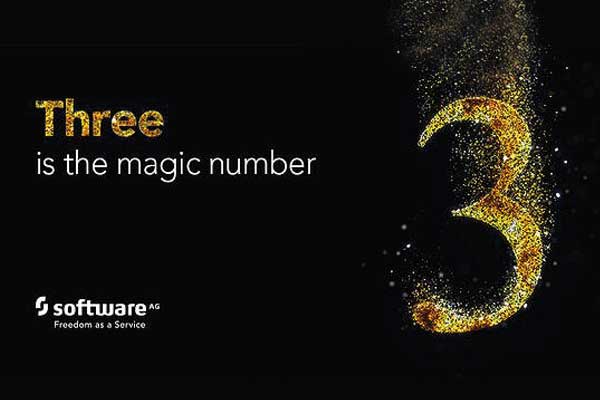Money often costs too much. In business, this can very easily become a literal truth. What do I mean?
While the finance and accounting department may be the one managing the money, it might — ironically — also be the department costing the most to operate. A study by HFS Research and KPMG International found that finance and accounting (F&A) was the functional area with the highest average spending, topping out at almost $53 million. So what’s driving this cost, you might ask? F&A departments have the greatest abundance of legacy systems and manual processes.
This makes F&A a fertile proving ground for transformation tools and automation initiatives, as businesses look for ways to gain efficiencies. But it also makes F&A a proving ground for new business models entirely — and innovative, forward-looking methods of monetizing revenue.
So, when developing your company’s digital transformation roadmap, make sure you’re thinking bigger than just the technology. Think about your approach to financial transformation, and how optimizing it can help your company generate business models that turbocharge your entire enterprise.

Evolving Products Into Services
Markets are changing, now more than ever. Across all industries, consumers are altering their behavior, whether via increased online shopping, higher customer expectations, or a generally greater desire for services. These trends likely won’t change direction any time soon. That means CFOs and F&A departments must find new ways to bundle, sell and deliver to customers. Everything, as it were, must be a service.
This creates an opportunity for regularly recurring revenue streams — and for massive financial gain for companies of all-stars and stripes. Three main reasons why stand out:
- The personalized service these business models can enable will drive greater customer loyalty
- A high-volume, low-dollar approach will create repeatable and reliable business
- Stabilized revenue streams will make pricing more affordable for all customers
Simply put, the business models of the future will offer more capability for companies to not only increase shareholder value and their position in the marketplace but to satisfy customers like never before.
Embracing the Digital Solutions Economy
This evolution is about way more than the relatively straightforward subscription-as-a-service approach, though. This is about a transformation of the modern-day approach to subscriptions as a whole. It’s not just about the outcome-, usage- or consumption-based models any longer; it’s about all of them — and more. The Digital Solutions Economy (as our team at Bramasol likes to call it) is about the brand-new business world that’s being built right now, one laser-focused on recurring revenue.
In fact, the membership-based models of the Digital Solutions Economy (DSE) are going to disrupt entire market segments and upend whole industries. How do we know? Companies already offering DSE models are seeing 30 to 50 percent overall growth. Why the success? Because embracing this new economy:
- Builds deeper engagement with customers
- Leads to higher retention rates
- Enhances opportunities for up-selling and cross-selling
- Increases brand loyalty
- Fosters higher revenue streams with greater predictability
Seventy percent of business leaders have said that business models represented in the Digital Solutions Economy are vital to their future prospects. Even still, only seven percent are currently generating significant revenue from their related offerings.
So, how can we put this theory into practice and bring these new monetization models to life? Only one way: technology.
Eliminating Costs, Increasing Value
When you’re building your business’s digital transformation roadmap, it’s critical that you plan for the financial technology you’ll need. So, what should you look for in a next-generation billing and revenue management solution? You’ll want a cloud-enabled offering that performs a number of critical tasks, including the harmonizing of real-time data, accurate forecasting of cash visibility, clear transparency of end-to-end processes, and the ability to serve as a single source of truth for the entire organization.
A powerful solution can make a huge impact. Just look at some of the results we’ve seen for our customers:
Reduction in Time-to-Market for new pricing and service offerings from 6-8 months down to 1-2 weeks
Reduction in Pricing & Offer Management by enabling marketing and sales teams to launch and update pricing in hours rather than weeks
Decrease in Billing & Collection Costs by optimizing collections and disputes to decrease costs to a percentage of revenue
Reduction in Revenue Leakage by automating systems to quickly find revenue losses related to limited billing and CRM solutions
Reduction in IT Expenditures by consolidating solutions and platforms to a single offering and reducing costs
At Bramasol, it’s our mission to help design custom billing and revenue management solution implementations that help businesses succeed in this new world. So, let F&A lead the way, and learn more about the Digital Solutions Economy today.
Before you know it, money will never have cost so little.





